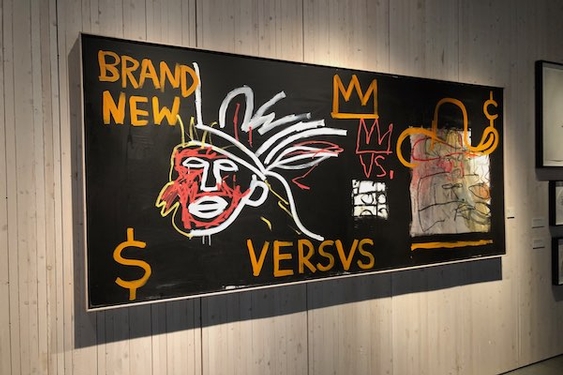
On Saturday, I was given the opportunity to visit the Craft and Folk Art Museum, where "Nathalie Miebach: Changing Waters" exhibit was on display. When I entered the second floor of the museum, all I could see were colorful woven baskets with wooden balls and tapes. The pieces looked like objects little children would play with.
However, as I looked more closely, I realized that each piece actually represented different scientific data collected by Miebach and other scientists.
“Changing Waters” features several 3-D interactive pieces demonstrating hurricane and water data. For example, “To Hear an Ocean in a Whisper” is a large piece that looked like a raft with a miniature carnival on top. Little did I know, the Ferris wheel and the high-swinging chairs were moveable. The “chairs” represent the water levels. When I spun the chairs, I saw the levels change during different time periods. This piece took Miebach about seven months to complete, and it's not ever her largest piece! The largest piece took up two walls; it's a map that “explores the seasonal variations of the marine life.” Every circle, rope, rod and color represent different things and information Miebach retrieved from her data.
Personally, I find the exhibit very visually stimulating. It took me almost a half hour to just look at one piece called, “The Andrea Gail.” This piece is about the adventure of Andrea Gail, the ship that was lost at sea near Sable Island in 1991 during a storm (the ship inspired the 1997 book The Perfect Storm and the 2000 movie). I followed pink blocks that had different markers explaining what happened to the ship at certain points. Then, I followed the water temperature and the water level. There are so many components to this piece that you have to really let your eyes explore.
I had a chance to talk to Miebach that night, and we discussed how 2-D pieces are just so flat. Her pieces teach us how important it is to interact with art. During the exhibit, it was hard for me to not touch every wheel and spin them to see different timelines. It's very fascinating and perfect for anyone who loves science, especially if you like hurricanes and marine life.
While viewing "Changing Waters," it is impossible to just stand and look. Allow your eye to wander - you will find many interesting things.
Nathalie Miebach: Changing Waters will be on view at the Craft and Folk Art Museum from Sept. 29 to Jan. 5. For more information, click here.











